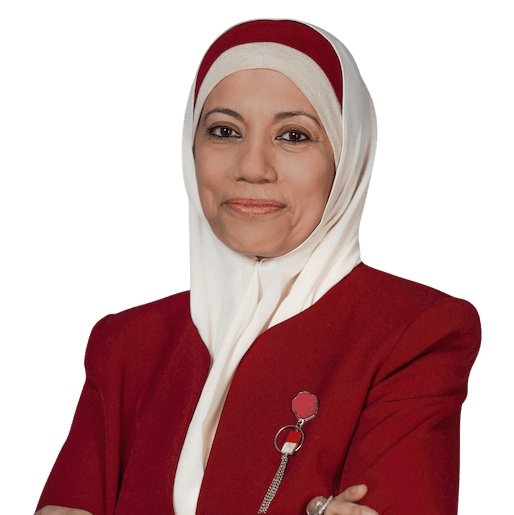Written By: Dr. Sura Thamer Alwan
Dr. Sura Alwan is an obstetrician and gynaecologist in Dubai with an MDChB degree from Iraq, an MD from Jordan, she is a member of the Royal College of Obstetrician and Gynaecology, UK.
Updated On:January 30, 2025
Read more.

What is a C Section (Caesarean Section)?
A C-section, also known as a caesarean birth or a caesarean section, is a surgical operation in which your uterus and abdomen are cut to deliver a baby. When a vaginal birth is neither feasible nor safe, or when there is a risk to your health or the health of your unborn child, they are carried out.
If you have certain medical issues or experience complications during labour during vaginal birth, you could require a C-section. A scheduled C-section occurs if any of the following circumstances occur:
- Cephalopelvic disproportion, or CPD, is the medical name for when your pelvis is too tiny to safely accommodate the delivery of an average-sized baby, or when your baby's head or body is too big to fit through your pelvis.
- Prior C-section: While it is feasible, not all women can give birth vaginally following a prior C-section. The type of uterine incision utilized during the prior C-section and the possibility of uterine rupture are two factors that may have an impact on this.
- Anticipating multiples: While vaginal delivery is common for twins, a caesarean surgery may be necessary for two or more kids.
- Placenta previa: This problem occurs when the placenta attaches itself too low in the uterus, obstructing the baby's passage out of your cervix.
- Transverse position: In a transverse lie, the baby is positioned sideways or horizontally inside your uterus.
- Breech position: Your baby enters your uterus feet- or bottom-first with a breech presentation. Some healthcare professionals could try to turn your baby, but if it doesn't work, a C-section will be required.
- Health problems: During vaginal birth, illnesses like heart disease may get worse during labour. If you have genital herpes at the time of delivery, a C-section is required.
- Other medical concerns: Other potential causes for a C-section include a big uterine fibroid, a pelvic fracture, or the expectation of a child with specific congenital abnormalities.
If any of the following occur during your labour, an unscheduled C-section birth may be required:
- Not advancing labour: Also known as protracted labour, this refers to the dilation and cessation of the cervix, the failure to efface (or thin), or the cessation of the baby's descent via the birth canal.
- Compression of the umbilical cord: The chord is wrapped around your infant's neck, or torso, or gets lodged between their head and your pelvis.
- Umbilical cord prolapses: Your cervix releases the umbilical cord before your baby does.
- Placental abruption: Before your baby is delivered, the placenta separates from the uterine wall.
- Foetal distress: During labour, your baby may experience issues that result in an erratic heart rate. Your physician may determine that the infant is beyond the point of tolerating labour.
C Section (Caesarean Section) Procedure
The following steps are usually taken during a C Section procedure.
- The procedure's permission paperwork will be signed by you.
- The anaesthesiologist will go over anaesthetic alternatives with you. The most common method for numbing the area from your breasts to your feet is an epidural (also known as a spinal block).
- The surrounding region of the incision will either have its hair cut or shaved.
- To maintain an empty bladder, a catheter will be implanted.
- Your blood pressure and heart rate will be monitored.
- To provide medication and fluids, an IV will be inserted into your hand or arm.
If you haven't already, you will talk with your obstetrician about the surgery and what to expect.
A C-section operation starts with getting you ready for anaesthesia. In order to keep you conscious throughout the birth, most scheduled C-sections utilize an epidural. You may, however, occasionally be unconscious due to general anaesthesia.
An antibiotic will be used to clean your abdomen and to help your baby breathe easier, you may be asked to wear an oxygen mask over your mouth and nose. After that, your doctor covers your legs, chest, and the area of the incision with a sterile drape. Lastly, a sterile screen or drape is raised between your head and your lower body by your healthcare staff.
After that, the obstetrician will make an incision through your skin and into your abdominal wall. Subsequently, the physician makes a 3- to 4-inch incision in the uterine wall. Ultimately, the obstetrician makes the incisions and removes your baby. The placenta is removed, the umbilical cord is cut, and the wounds are sewn up using staples and sutures.
The procedure for an emergency C-section is the same, but the pace at which your baby is taken is altered. A scheduled C-section usually takes ten to fifteen minutes to deliver the baby. During an emergency C-section, your baby is removed by your physician in a matter of minutes.
C Section (Caesarean Section) Benefits
The fact that a C-section is generally safer for both you and your child is its greatest advantage. Most medical professionals will perform a C-section to reduce risks when a vaginal delivery is unsafe or might harm your child. Unplanned C-sections occur occasionally. For instance, it is safer to perform an emergency C-section rather than wait for your baby's heart rate to decrease any lower if it reaches a hazardous level.
C Section (Caesarean Section) Risks
Like any operation, there are hazards associated with C-sections. When compared to vaginal birth, there is a modest increase in the chance of complications with C-sections. These might consist of:
- Infection
- Blood loss, or haemorrhage
- Embolism
- Harm to the bladder or colon
- A wound that might make the uterine wall weaker
- Placental anomalies in subsequent pregnancies
- General anaesthesia risks.
The following are additional drawbacks of a C-section:
- It might be harder to recover following a C-section than from a vaginal birth.
- Chronic pelvic discomfort is more likely to result from C-sections.
- Future pregnancies are more likely to end in a C-section for you.
- Your infant might not be able to nurse well.
- There's a chance your infant will experience more respiratory issues.
C Section (Caesarean Section) Recovery
You will have incisional discomfort when the anaesthetic wears off. You may also have difficulty breathing deeply and have gas pains. The first few days after your C-section, make sure someone is present to assist you in getting out of bed. Most patients spend two to three days in the hospital.
Four to six weeks may be needed for a complete recovery. Find out from your healthcare professional what to anticipate from your recuperation. For a few weeks, the majority of providers advise against doing any heavy lifting, stairs, or other physical activity. So that you may relax and heal, ask your friends or partner for assistance with housework, cooking, and running errands. Driving may be restricted by your provider until you can easily turn your body and apply pressure to the pedals.
For up to six weeks, you should anticipate some discomfort near the incision, as well as cramping and bleeding. For pain, taking over-the-counter medications like ibuprofen or acetaminophen may be beneficial. Wait at least six weeks to have sex, or until your doctor gives the all-clear.
Following surgery, you will also have a vaginal discharge as a result of your uterine lining being lost. The discharge, known as lochia, will first seem red and progressively become yellow. If your vaginal discharge smells bad or you encounter significant bleeding, make sure to contact your healthcare professional. Tampons should not be used until after you have finished bleeding; instead, use sanitary pads.
Get in touch with your healthcare physician if you suspect an infection at the site of your C-section. Keep an eye out for infection symptoms like:
- The incision becomes red.
- The incision leaks pus or discharge.
- You are experiencing fever or increasing soreness.
Moreover, severe pelvic discomfort and cramps, as well as significant bleeding, are other indicators of a problem.
References
Boutsikou, T., & Malamitsi‐Puchner, A. (2011). Caesarean section: impact on mother and child. Acta Paediatrica, 100(12), 1518
Hobbs, A. J., Mannion, C. A., McDonald, S. W., Brockway, M., & Tough, S. C. (2016). The impact of caesarean section on breastfeeding initiation, duration and difficulties in the first four months postpartum. BMC pregnancy and childbirth, 16(1), 1-9.
Hyde, M. J., Mostyn, A., Modi, N., & Kemp, P. R. (2012). The health implications of birth by Caesarean section. Biological Reviews, 87(1), 229-243.
Lavender, T., Hofmeyr, G. J., Neilson, J. P., Kingdon, C., & Gyte, G. M. (2012). Caesarean section for non‐medical reasons at term. Cochrane database of systematic reviews, (3).
Sandall, J., Tribe, R. M., Avery, L., Mola, G., Visser, G. H., Homer, C. S., ... & Temmerman, M. (2018). Short-term and long-term effects of caesarean section on the health of women and children. The Lancet, 392(10155), 1349-1357.
Meet our doctors from the Obstetrics & Gynaecology department
|
||||||||
|
||||||||
|
||||||||
|
||||||||
|
||||||||
|
||||||||
|
||||||||
|
||||||||
|
||||||||
|
||||||||
|
||||||||
|
||||||||
|
||||||||
|
||||||||
|
||||||||
|
||||||||
|
||||||||
|
||||||||
|
||||||||
|
||||||||
|
||||||||
|
||||||||
|
||||||||
|
||||||||
|
||||||||
|
||||||||
|
||||||||
|
||||||||
|
||||||||
|
||||||||
|
||||||||
|
||||||||
|
||||||||
|
||||||||
|
||||||||
|
||||||||
|
||||||||
|
||||||||
|
||||||||
|
||||||||
|
||||||||
|
||||||||
|
||||||||
|
||||||||
|
||||||||
|
||||||||
|
||||||||
|
||||||||
|
||||||||
|
||||||||
|
||||||||
|
||||||||
|
||||||||
|
||||||||
|
||||||||
|
||||||||
|
||||||||
|
||||||||
Similar Posts
teleMEDCARE App
Download teleMEDCARE app from Google Play or App Store to connect immediately to Medcare doctors at a click of a button and without an appointment.

Home Services
We offer our patients a broad range of home health care services in the comfort of their own homes. Book an appointment for lab tests, vaccinations, nurses and physiotherapists.

Chronic Care
Know more about our Chronic Care Management Programme in partnership with Damana Saicohealth.

teleMEDCARE App mobile
Download teleMEDCARE app from Google Play or App Store to connect immediately to Medcare doctors at a click of a button and without an appointment.

Home Services
We offer our patients a broad range of home health care services in the comfort of their own homes. Book an appointment for lab tests, vaccinations, nurses and physiotherapists.

Spotii
We have partnered with Spotii to offer a more flexible way to pay - Pay over time for your purchase. No interest, no cost & no catch.

































































